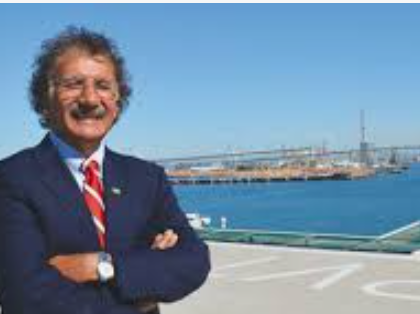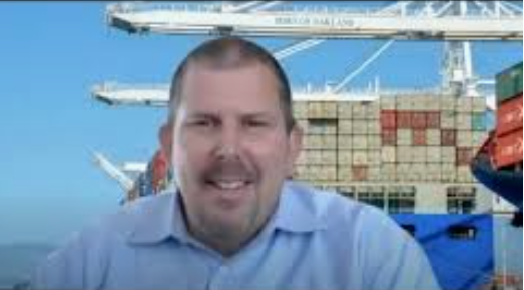|
| |
Pacific Ports Panel Discusses Challenges and Search for SolutionsModerated by Bill Mongelluzo, Journal of Commerca Mario Cordero, Port of Long Beach CA. LA/LB is the largest port in the country. 16-17,000,000 TEUs in 2019. In LB, September 2020 was the highest volume in the port’s history, 3rd Q the best in the 107 year history of the port. Chassis shortage is a huge problem. Solution needs participation of the terminals, carriers, and the trade. 2020 saw the flood of PPE shipments, restocking of inventories in the US, and change of consumer spending. These factors resulted in a huge surge of volume, but two of the three factors could change in 2021. We are using Pier S in an over flow resource project. We hope this will be helpful. The advance data sharing program is helping to keep cargo moving! The port handles 2,000 truck load per hour and use of the system can benefit shippers. The info in the system is totally secure, and is digitized to handle a reservation system. All shippers should feel comfortable using this tool This helps create synchronicity when 800,000 containers are moved in a single month.  Gene Seroka, Port of Los Angeles. The COVID shut down in China hit us early and hard. Now we have a strong recovery, with volumes up over 50% above low points in April. Larger ships are also a challenge. One recent vessel came in at 34,800 TEUs, 5 to 1 import over exports. This affects rail road carriers, trucker asset placements and crew management. We expect volumes to dissipate a bit by mid-December. Nonetheless, there remains a huge incentive to radically increase the number of double transactions at the port.  Bryan Brandes, Port of Oakland Local logistics industry reacted well to the pandemic. Port ops stayed open, we worked closely with labor on safety protocols. Add’l gates were opened, Shippers Transport increased their pulls, terminal efficiencies helped increase chassis availability and container availability. We are working to limit congestion before a ship starts working. Our website shares info on blank sailings, container turn times at terminals. Major work is underway at the port. There are 3 large cranes heading to OITC from China. We will be opening new transload facilities and we have been working to widen our vessel turning basins in order to handle the largest ships. At the Oakland airport and port, FedEx and UPS have their largest west coast sorting stations. Exports are 47% of our business. Very few empties are shipped out from our port. Import/export balance keep empty supplies adequate and reliable, prevents carriers from shipping out empty export contrs.  John Wolfe, NW Seaport Alliance (Seattle/Tacoma) Volumes are up in 3rd Q but not as high as SoCal. Even so, we are having an increase with yard operatons and gate congestion problems. We are anticipating swings in cargo volumes, trying to manage as best as possible. Truckers, terminal operators, carriers must meet to discuss challenges/problems in real time. Also, individual trucker and terminal meeting are needed—the situations change very week. Dray offs to nearby, under utilized terminals are helping. These areas are also being used for truck parking. Dray offs allow exporters to drop containers at a nearby location if gates are missed and that means that truckers don’t have to stay overnight. The off site can position containers onto chassis, and it has also increased available truck parking. Real time accurate data is crucial to keep a 30 minute transaction from turning into a 2 hour transaction!  Peter Friedmann, OurManInDC, AgTC, FBB Federal Relations A big concern is attaining reliable flows in the current environment. The ports need more physical space. Better, faster and more accurate info for brokers & FFs will help to reduce dwell times, which can also help to prevent equipment shortages. | |
| CBFANC Newsletter - copy of October 2020 - Info Expeditor |